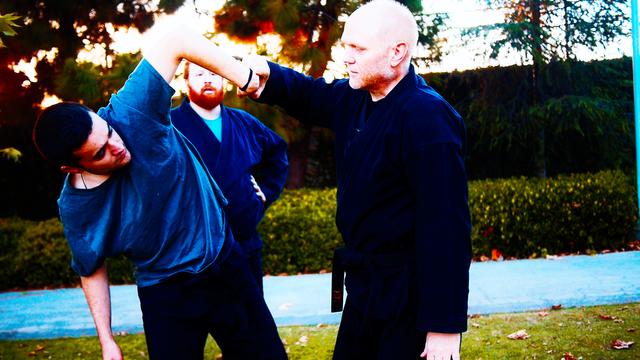Don't Trap Yourself with Bujinkan 手解 Te Hodoki

Warmed up with ukemi and taihenjutsu with a sword in our belts and drawing while rolling. We did zempo kaiten, koho kaiten, sokuho kaiten, zempo kaeru kaiten, koho kaeru kaiten, oten, and mute oten. With the mute oten, we varied our sword draws so that they occurred while we were airborne. When you land the cut is complete.
I started the class by asking everyone to review basic 手解 te hodoki. With something as basic as te hodoki, there is a LOT of kuden. It is surprising how something so simple can only be taught in person, through direct experience.
After I shared some useful kuden, I moved to a variation I learned from Hatsumi Sensei. One of the secrets of te hodoki is that the attacker traps himself when he grabs. So in this movement we reshape the kukan before kicking free.
Now I added a sword to my belt. As I begin my draw, the opponent grabs my tsuka to prevent it. This is also te hodoki. For law enforcement the skills of 破術 hajutsu are critical for weapon retention and control of the active space.
So I let the opponent trap himself on my weapon. Then I change the space so that I may draw anyway. Then I kick him into cutting position. The transition may fall from hicho to yoko aruki into firing or cutting range.
Now with the tsurugi, the pivot point is unique to the weapon. So when the attacker traps himself by grabbing your wrist, this provides a handy fulcrum. Your blade may swing freely to cut him anywhere, and if he tries to push away, it pierces nicely. You also may grab your own tsuka to lock him tightly and break his wrist.
Of Note: If you always ask what if, you never see what's right in front of you.